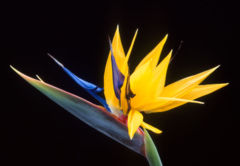Strelitzia
| Strelitzia {{{status}}} Fossil range: {{{fossil_range}}}
| ||||||||||||||||||||||||||||||||||||||||||||||||||||||||||||||||||
|---|---|---|---|---|---|---|---|---|---|---|---|---|---|---|---|---|---|---|---|---|---|---|---|---|---|---|---|---|---|---|---|---|---|---|---|---|---|---|---|---|---|---|---|---|---|---|---|---|---|---|---|---|---|---|---|---|---|---|---|---|---|---|---|---|---|---|
 | ||||||||||||||||||||||||||||||||||||||||||||||||||||||||||||||||||
| Plant Info | ||||||||||||||||||||||||||||||||||||||||||||||||||||||||||||||||||
| ||||||||||||||||||||||||||||||||||||||||||||||||||||||||||||||||||
| Scientific classification | ||||||||||||||||||||||||||||||||||||||||||||||||||||||||||||||||||
| ||||||||||||||||||||||||||||||||||||||||||||||||||||||||||||||||||
| [[{{{diversity_link}}}|Diversity]] | ||||||||||||||||||||||||||||||||||||||||||||||||||||||||||||||||||
| {{{diversity}}} | ||||||||||||||||||||||||||||||||||||||||||||||||||||||||||||||||||
| Binomial name | ||||||||||||||||||||||||||||||||||||||||||||||||||||||||||||||||||
| {{{binomial}}} | ||||||||||||||||||||||||||||||||||||||||||||||||||||||||||||||||||
| Trinomial name | ||||||||||||||||||||||||||||||||||||||||||||||||||||||||||||||||||
| {{{trinomial}}} | ||||||||||||||||||||||||||||||||||||||||||||||||||||||||||||||||||
| Type Species | ||||||||||||||||||||||||||||||||||||||||||||||||||||||||||||||||||
| {{{type_species}}} | ||||||||||||||||||||||||||||||||||||||||||||||||||||||||||||||||||
| Species | ||||||||||||||||||||||||||||||||||||||||||||||||||||||||||||||||||
| See text | ||||||||||||||||||||||||||||||||||||||||||||||||||||||||||||||||||
| [[Image:{{{range_map}}}|{{{range_map_width}}}|]] | ||||||||||||||||||||||||||||||||||||||||||||||||||||||||||||||||||
| Synonyms | ||||||||||||||||||||||||||||||||||||||||||||||||||||||||||||||||||
| {{{synonyms}}} |
Strelitzia is a genus of five species of perennial plants, native to South Africa. The genus is named after the duchy of Mecklenburg-Strelitz, birthplace of Queen Charlotte of the United Kingdom. The common name of the genus is bird of paradise flower, because of a supposed resemblance of its flowers to the bird of paradise. In South Africa it is commonly known as a "crane" flower.
The species S. nicolai is the largest in the genus, reaching 10 m tall; the other species typically reach 2-6 m tall. The leaves are large, 30-200 cm long and 10-80 cm broad, similar to a banana leaf in appearance but with a longer petiole, and arranged strictly in two ranks to form a fan-like crown of evergreen foliage. The flowers are produced in a horizontal inflorescence emerging from a stout spathe. They are pollinated by sunbirds, which use the spathe as a perch when visiting the flowers; the weight of the bird on the spathe opens it to release the pollen onto the bird's feet, which is then deposited on the next flower it visits.
- Species
- Strelitzia alba (syn. S. augusta) - White bird of paradise
- Strelitzia caudata - Swaziland Strelitzia, African desert banana
- Strelitzia nicolai - White, or Giant bird of paradise; Wild banana
- Strelitzia reginae (syn. S. parvifolia) - Strelitzia, Bird of paradise, or Crane lily
- Strelitzia juncea (Ker Gawl.) - Greatly reduced or non-existent leaves. Cite.
- Hybrids
- S × kewensis (hybrid between S. reginae and S. augusta)
- Links
In The Media
Strelitzia is seen in the TV Series Farscape, it eaten by the Scarrens to enhance their intelligence. (420: "Hot To Katratzi")
References & notes
- References
-
Strelitzia reginae plant
-
Strelitzia reginae flower
-
A wasp in Strelitzia reginae flower
-
Strelitzia reginae flower



